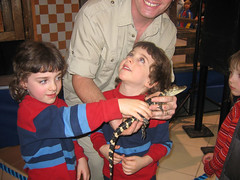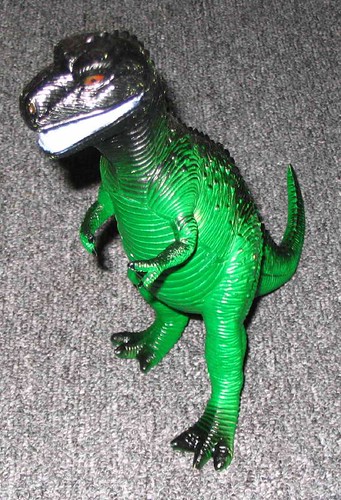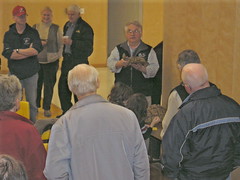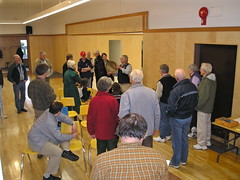Some good questions from Samuel
We recieved a very nice email from Samuel Roy. In it he asked some good questions about dinosaurs:
Do you know where they came from? Can you tell me why we can't see them anymore? I think it would be cool to see a dinosaur, don't you? How old is the oldest dinosaur by the way?We aren't experts, but this is what we think so far. Dinosaurs evolved from early lizards (reptiles) like Ichthyostega. (The picture is from Early Tetrapod Research at Cambridge University, UK.)

The oldest dinosaur we know of is Herrerasaurus (235 million years) followed closely by Eoraptor (228 million years).
We can't see dinosaurs today because they went extinct at the end of the Cretaceous period, 65 million years ago. No one really knows what caused the extinction of the dinosaurs. A lot of scientists think that a huge comet hit the earth and caused it. But our mom read an article the other day by a scientist who studies ancient pollen and he said that there seemed to be some really bad things happening even before the comet. There was a lot less pollen around for quite a while before the comet. And she explained to us that it probably means the plants that the dinosaurs ate were having a hard time growing. (Sorry, mom forgot to furl the article. If anyone knows the link, i'd love to include it.)
There are some animals that were around with the dinosaurs that we can still see today--the Tuatara of New Zealand is one. It has been around pretty much unchanged for 225 million years.

Others are crocodiles, sea turtles and sharks.
And, yes, we think it would be really cool to see a dinosaur.




